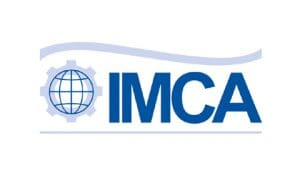 The ‘International Code of Practice for Offshore Diving’ (IMCA D 014) is one of the key guidance documents for contractors and clients published by the International Marine Contractors Association (IMCA) – Booth S18 at OTC 2014. It provides advice on ways in which offshore diving operations can be carried out safely and efficiently, and references other IMCA diving guidance documents extensively.
The ‘International Code of Practice for Offshore Diving’ (IMCA D 014) is one of the key guidance documents for contractors and clients published by the International Marine Contractors Association (IMCA) – Booth S18 at OTC 2014. It provides advice on ways in which offshore diving operations can be carried out safely and efficiently, and references other IMCA diving guidance documents extensively.
An industry-wide consultation has led to this invaluable document being expanded and refreshed with better layout to ensure greater clarity. It offers examples of good practice and includes personnel, equipment a systems guidelines for surface supplied diving using air, nitrox, and mixed gas; closed bell diving; and saturation diving. In order to provide a ‘level playing field’ for diving contractors, the code of practice seeks to lay down minimum requirements with which all IMCA members world-wide should comply.
“IMCA D 014 is one of the cornerstones of our work in ensuring safe and efficient diving operations, and many clients around the world regard compliance with the guide as essential when selecting a diving contractor, ” explains IMCA’s Technical Director, Jane Bugler.
“The guidance was originally published in 1998 and updated in 2007; then in 2012 we set up a workgroup to review and update it. This was largely to reflect changes in IMCA documentation since it was last revised, but also to include information received as a result of our industry-wide consultation, and more references to diving management – including clarification on minimum team sizes; maximum air bottom time limitation; and hyperbaric evacuation.”
The 80-page document covers duties, roles and responsibilities; equipment; personnel; medical and health; operational planning; hyperbaric evacuation of saturation divers; emergency response and contingency plans; documentation/audits; and includes a bibliography/reference section; country-specific appendices; and appendices covering diving management system (DMS) and maximum bottom time limitation.
IMCA D 014 can be downloaded free of charge from the IMCA website at www.imca-int.com with printed copies available at £20.00 for members and £40.00 for non-members (plus 20% for delivery outside Europe) from publications@imca-int.com
Further information on IMCA and its work on behalf of its 970+ member companies in over 60 countries is available fromwww.imca-int.com and imca@imca-int.com. The association has LinkedIn and Facebook groups and its Twitter handle is @IMCAint
About IMCA
IMCA is an international association with some 970 members in over 60 countries representing offshore, marine and underwater engineering companies. IMCA has four technical divisions, covering marine/specialist vessel operations, offshore diving, hydrographic survey and remote systems and ROVs, plus geographic sections for the Asia-Pacific, Central & North America, Europe & Africa, Middle East & India and South America regions. As well as a core focus on safety, the environment, competence and training, IMCA seeks to promote its members’ common interests, to resolve industry-wide issues and to provide an authoritative voice for its members.
IMCA Vision & Strategy. As a result of work and collective input in 2013, IMCA has redefined its stated core purpose to be “Improving performance in the marine contracting industry”. To achieve this goal, IMCA’s Vision & Strategy has been devised with two elements in mind: Core activities and ways of working. Targets and objectives against which the association will measure progress in 2014 have been established.
IMCA publishes some 200 guidance notes and technical reports – many are available for free downloading by members and non-members alike. These have been developed over the years and are extensively distributed. They are a definition of what IMCA stands for, including widely recognised diving and ROV codes of practice, DP documentation, marine good practice guidance, the Common Marine Inspection Document (CMID) – now available electronically as eCMID, safety recommendations, outline training syllabi and the IMCA competence scheme guidance. In addition to the range of printed guidance documents, IMCA also produces safety promotional materials, circulates information notes and distributes safety flashes.





